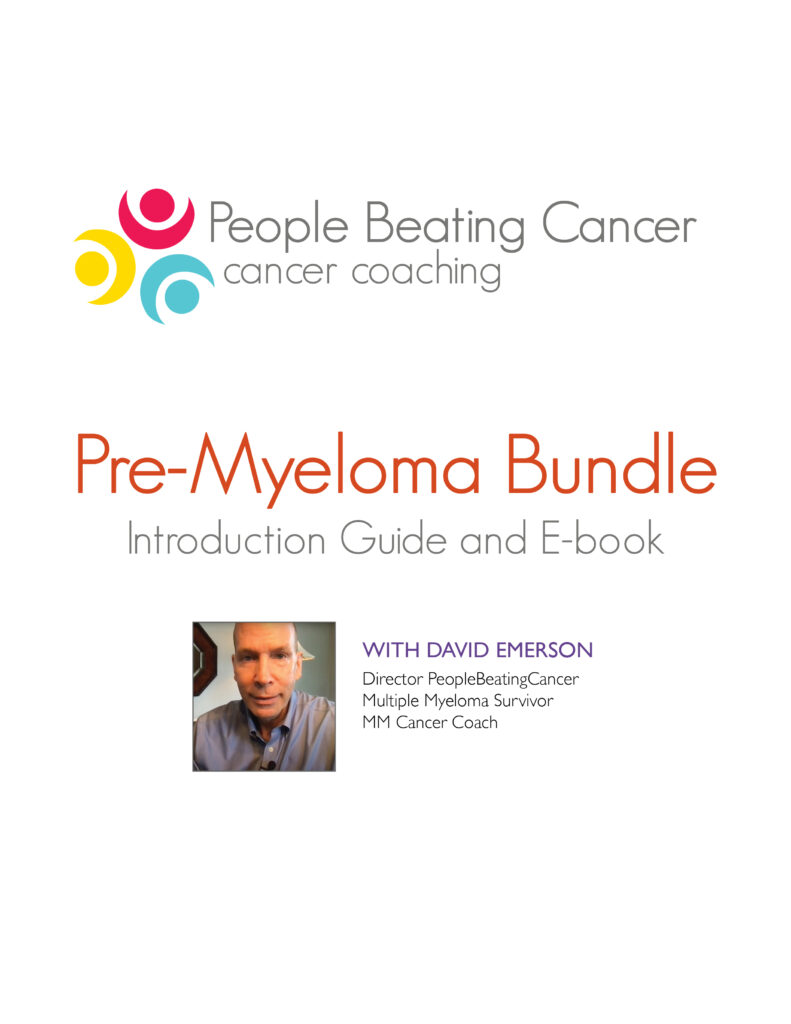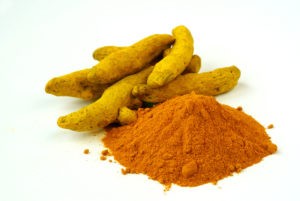
Diagnosed with SMM, SPB, or MGUS?
Learn how you can stall the development of full-blown Multiple Myeloma with evidence-based nutritional and supplementation therapies.
Click the orange button to the right to learn more.
- You are here:
- Home »
- Blog »
- Pre-Myeloma »
- MGUS Therapies
MGUS Therapies

The common wisdom amount oncologists is that MGUS does not have symptoms and that there are no therapies that can slow or prevent a diagnosis of full multiple myeloma. In my experience, this common wisdom could not be more incorrect.
Despite what your oncologist may have told you about your MGUS diagnosis, there are evidence-based MGUS therapies. Therapies shown to reduce your risk of a full myeloma diagnosis.
When I was diagnosed with a single plasmacytoma of bone my oncologist told me that nothing could be done.
According to the research linked and excerpted below, MGUS has dietary risk factors. That is to say that certain foods are associated with MGUS. Certain foods can increase the risk of an MGUS diagnosis and certain foods can decrease the risk of an MGUS diagnosis. Consider a diet based on anti-angiogenic foods.
The bottom study goes a step further by studying the effects of 4 grams of curcumin on MGUS patients. According to the study, curcumin supplementation was able to reduce paraprotein levels (commonly termed “m-spike”) in half of the study participants.
In my experience, the average MGUS patient may have an m-spike but one that is very low often less than one. The definition of multiple myeloma is an m-spike of 3.0.
However, if you were an MGUS patient and you could reduce your m-spike and at the very least slow your progress toward a multiple myeloma diagnosis, would you?
Have you been diagnosed with a form of pre-myeloma such as mgus or smm? let me know if you would like to learn more about evidence-based non-conventional therapies shown to reduce the risk of multiple myeloma.
David.PeopleBeatingCancer@gmail.com
thank you,
David Emerson
- MM Survivor
- MM Cancer Coach
- Director PeopleBeatingCancer
Dietary risk factors for monoclonal gammopathy of undetermined significance in a racially diverse population
“Key Points-
Consumption of whole-grain bread, oats, and rice (P<0.05) and fruits and vegetables (P=0.02) were associated with reduced risk of MGUS.
Intake of sugar- (P=0.04) or artificially (P=0.03) sweetened soft drinks was associated with increased risk of MGUS.
Abstract
Monoclonal gammopathy of undetermined significance (MGUS) – a precursor of multiple myeloma – is associated with shorter lifespan and cardiac, renal, neurologic, and immune-related comorbidities. There is little known about modifiable risk factors for this condition.
To determine if risk of MGUS is associated with dietary factors in a racially diverse population, we conducted a United States population-based case-control study from the National Health and Nutrition Examination Survey (1988-2004), which included 373 individuals with MGUS and 1,406 matched controls.
Diet was characterized by one 24-hour dietary recall, with gram intake of individual foods and beverages aggregated into groups.
Unconditional multivariable logistic regressions were used to model associations between intake of several food groups and MGUS, with odds ratios (OR) and 95% confidence intervals (95% CI) reported for the highest relative to the lowest quantile of intake.
Daily gram intake of several food and beverage groups were significantly associated with MGUS.
MGUS was inversely associated with:
- whole-grain bread, oats, and rice (OR 0.70; 95% CI 0.48-1.00; P<0.05),
- fruits (excluding juice) and vegetables (OR 0.69; 95% CI 0.52-0.93; P=0.02),
- vegetables (OR 0.75; 95% CI 0.56-0.99; P<0.05),
- tomatoes (OR 0.72; 95% CI 0.51-1.00; P<0.05),
- and cruciferous vegetables (OR 0.44; 95% CI 0.26-0.74; P<0.01).
Direct associations were observed for:
- sugar-sweetened beverages (OR 1.34; 95% CI 1.00-1.78; P<0.05),
- sugar-sweetened soft drinks (OR 1.41; 95% CI 1.01-1.96; P=0.04), and
- artificially sweetened soft drinks (OR 1.55; 95% CI 1.04-2.33; P=0.03).
Our study shows that diet is potentially a modifiable risk factor for MGUS.”
The Potential Role of Curcumin in Patients with Monoclonal Gammopathy of Undefined Significance—Its Effect on Paraproteinemia and the Urinary N-Telopeptide of Type I Collagen Bone Turnover Marker
“Purpose: To determine the effect of curcumin on plasma cells and osteoclasts in patients with MGUS…
Results: Our results show that oral curcumin is able to decrease paraprotein load in a select group (i.e., those having a paraprotein level of >20 g/L) of patients with MGUS. Fifty percent (5 of 10) of these patients had a 12% to 30% reduction in their paraprotein levels, while on curcumin therapy. In addition, 27% of patients on curcumin had a >25% decrease in urinary N-telopeptide of type I collagen.
Conclusion: Due to the possible progression of MGUS to multiple myeloma, the potential role of curcumin as a therapeutic intervention for MGUS patients warrants further investigation…


